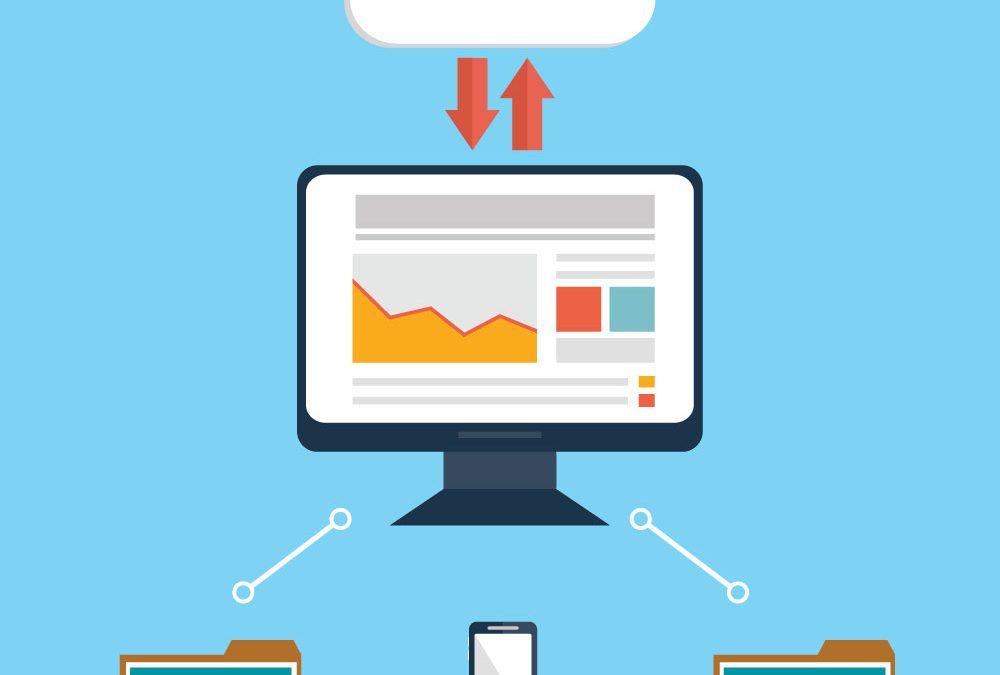
May 16, 2018 | SMB Technology, SMB Technology, SMB Technology, SMB Technology, Technology News
As Technology grows, so does the complexity of threats to your network–hackers infiltrating your network and stealing passwords, infection of your network with malware, phishing schemes, and even cybercriminals masquerading as your own IT staff, all these pose risks to your network’s security. Your network is only as strong as its weakest link. And sometimes, that weak link is your human capital. According to a CompTIA white paper, network security was a key issue on the minds of business owners coming into 2018. Cybercrime damages are expected to reach $6 trillion annually in the next few years. Keeping malware and antivirus definitions up to date, and having OS patches ready is necessary, of course. And so is data encryption. But don’t overlook the human element. Human error is implicated in more than half of all data breaches, more than technological error. The education and training of employees plays an important part in keeping your network secure. A Culture of Security As important as technology tools are, the human element is even more so. When a data breach occurs, human error is at fault more than 50% of the time. So what can you do to train your employees? Part of the solution starts at the top. Managers need to adopt a strong security orientation for the entire company, educating all employees in how to recognize potential threats–phishing schemes, for example–and to report these threats. They need to keep up with the dangers related to social media and unsecured “hotspots.” Also, they need to be told about the establishment and management of strong passwords and data encryption. Should a data...

May 8, 2018 | SMB Technology, SMB Technology, SMB Technology, SMB Technology, Technology News
Migration to the cloud has become more common over the years, with more and more companies moving to the Cloud each day. Benefits of the Cloud extend to many if not all business systems—Communication and Collaboration, Email, file sharing and data storage to name a few. Read on to learn more about how companies, especially small to medium-sized businesses, are using the public cloud for their operations. Benefits and Characteristics of Public Cloud Overall, the public cloud offers a less-expensive alternative to private cloud resources, with many of the benefits. Like the private cloud, the public cloud enables businesses to avoid investing in the purchase and maintenance of costly hardware, since the underlying infrastructure is already available via the web. Capital expenses can then be converted to operating expenses. What’s more, the cloud is scalable and elastic, giving enterprises the ability to use more or less of the total environment according to different web traffic to their business at different times. Public cloud environments are ready to use, with required resources built in. Other characteristics named by the U.S. National Institute of Standards and Technology include the public cloud being open to more users and more enterprises. Finally, public cloud offers network access everywhere, since the data is accessible via the internet. Considering Public Versus Private Cloud As great as the public cloud is, it may not be right for your particular enterprise. Compliance with regulatory standards like Sarbanes Oxley, PCI and HIPAA necessitates confidentiality of information and restrictions on access to it. Companies that need to protect their customers’ and clients’ information will find a private cloud environment...

Apr 17, 2018 | SMB Technology, SMB Technology, SMB Technology, SMB Technology, Technology News
With more and more businesses putting their data in the Cloud, most agree the benefits of doing so outweigh the risks. However, there are still risks to consider, both before and after selecting a Cloud Service Provider. Read on to find out about these as well as to learn how to manage security in the Cloud. Making Your Business Cloud-Ready According to a Computing Technology Industry Association (CompTIA) report, “Assessing the Cloud Security Landscape,” 85% of business and IT professionals are confident in their Cloud Service Provider. Cloud computing is certain to grow even more in coming years. What cloud security concerns are top of mind for business owners and IT professionals? What do they need to consider before migrating to the Cloud? Three of the key concerns business owners have are about business downtime and disaster recovery, loss or exposure of data when it migrates to the cloud, and the safety of data, through encryption, when the data is in motion and at rest. Other concerns include the physical location of data centers and shared technology concerns in multi-tenant environment. In spite of these concerns, only 3 in 10 business owners do a comprehensive evaluation, according to CompTIA. Questions to Ask Your Cloud Service Provider Before selecting a Cloud Service Provider, ask yourself and the potential provider some important questions. First, should all of your data be in the cloud? If you are responsible for compliance with regulatory standards, or if your data is proprietary or competitive, the cloud might not be the right place for the more sensitive information. Be sure to have a solid IT...

Apr 9, 2018 | SMB Technology, SMB Technology, SMB Technology, SMB Technology
We hear in the news every day about natural disasters such as fires, floods, storms and even earthquakes, and know the damage they cause. But what about the potential consequences for your business? What if your business stays closed for a period of time, and loses revenue because your information systems are unavailable? Or if a cyberattack occurs that results in a data breach that compromises your business’s reputation? Read on to learn more about how to make a disaster recovery and business continuity plan. The Importance of Having a Plan Disaster Recovery and Business Continuity consists of processes used to prepare for disruptive events, whether natural or man-made. Having a plan will help you know what to do and how to do it in events that can result in downtime for your business. Your plan can prevent loss of revenue, as well as loss of reputation. It can even help keep your business in business. Assessing Your Risks Think first of your mission-critical applications–your phone system, email system and maybe even processing orders. Consider how much downtime you can risk, having these systems out of commission. Tabulate potential overhead, loss of employee wages and revenue over the course of hours, days or weeks. Systems needing to take priority are the ones that keep your business running smoothly, keeping revenue flowing and employees productive. Other applications, including shared files, can be backed up and retrieved. Along with mitigating financial risk, a plan can guard against potential damage to your business’s reputation resulting from a data breach, or being unavailable in the event of a natural disaster. Implement, Test and...

Mar 13, 2018 | SMB Technology, SMB Technology, SMB Technology, SMB Technology, Technology News
A network is only as strong as its weakest link, and if that weakest link is your security, that can compromise the revenue and the reputation of your business. Attacks just from ransomware have increased over the years, by 200% between 2015 and 2016 alone. There are three fronts to consider: identify the hazards, use technical tools to protect your network, and educate your employees on cybersecurity. Read on to find out more about how to protect yourself. Know the Hazards of Malware and Phishing Schemes With so many businesses finding it necessary to gather, store and monetize customer data, this is an area of vulnerability. Malicious software, or “malware,” can take various forms, from worms and viruses to ransomware, which can hold your data hostage. Some types can simply make your system run more slowly, and some can steal or destroy data. Phishing schemes are designed to steal private data simply by an unwary recipient clicking a link. Technical tools are part of the protection plan. Fight Cyber Attacks with Technology There are plenty of technical tools and applications to keep your system safe. Firewalls and SPAM filters can keep unwanted network communications from coming in and going out. Anti-virus and anti-malware applications keep harmful worms, viruses and other malicious software from infiltrating your network. Be sure also to keep your antivirus and anti-malware programs up-to-date, to guard against the latest threats. Network monitoring can help stop attacks before they start, and operating system patches can fill in any security holes in the network. Along with these tools, be sure to train your employees to recognize security hazards....

Mar 6, 2018 | SMB Technology, SMB Technology, SMB Technology, SMB Technology, Technology News
Your network is the backbone of your technology infrastructure, enabling your business to run smoothly. But are you using it in the most cost-effective manner, getting the most for your technology budget? Read on to find out more about how to keep network expenses in check. Start with a Telecommunications Expense Audit Since vendor contracts come up for renewal periodically, look at what you are paying for what you are getting. Start with an inventory of all of your network assets and providers. List and diagram carriers, circuit IDs, and phone numbers, as this information is critical for cost negotiations and in troubleshooting outages. Also, identify any aging equipment that can be phased out and replaced to ensure your productivity and that of your staff. These are some considerations in preparing for renewal negotiations. Consider Software-Defined Wide Area Networking (SD-WAN) One way to rein in network costs is to adopt SD-WAN (Software-Defined Wide Area Networking) technology. According to IDC, use of software-defined networking is expected to grow to $8 billion in 2018. This technology combines multiple providers of business-class Internet to give optimal performance, with lower costs compared to other alternatives. Since multiple providers are working at the same time, they can keep calls from being dropped and can minimize outages. The Importance of Network Monitoring Network monitoring helps reduce network costs in a few ways. Knowing where network traffic is going helps to identify bottlenecks and other irregularities, preventing outages and resultant downtime before these disruptions occur. Constant monitoring measures circuits both to and from your applications, helping your network adapt to changing conditions in real time. Keeping...







